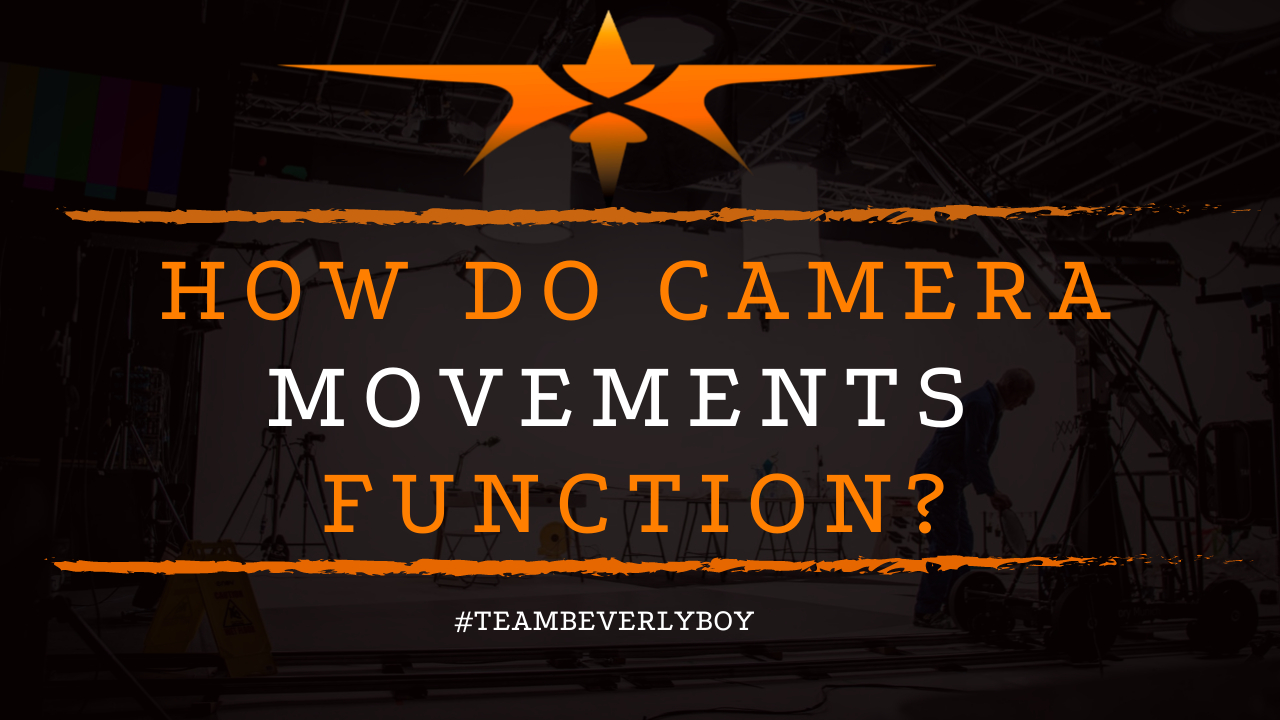
How Do Camera Movements Function?
Cinematographers gain quite a bit of audience attention just in the way that they are able to use their cameras to create the appearance of forward momentum, energy within the space, and draw the spectator into the action, but how do camera movements function? This is a question that frequently arises in regards to the use of professional cameras and the answer is particular fascinating. In fact, you might be surprised to find out how camera movements function to provide unique details surrounding the objects, characters, and spaces that are portrayed on-screen and off.
Camera movements are some of the most expressive elements in the filmmaking process and present many opportunities for the filmmaker to build unique relationships between the subject and the frame. Through the use of cinematic camera movements, viewers are able to gain perspective as to the overall space that they’re visualizing, the time in which the story is representing, and the general narrative information that is contained. But how? How do camera movements function to deliver such an amazing experience?

Mise-en-Scene
Mise-en-scene represents the unique arrangement of stage properties and scenery within the space in which the camera is filming. In French, it means “setting the stage,” but in terms of filmmaking, it represents everything that stands in front of the camera and is viewable by the audience including the set design, lighting, actors, and various other elements. The camera movement and specific angles that the cinematographer chooses will actually orient the viewer in such a way that they are within the mise-en-scene or viewable are of the space.
Camera movements function to deliver additional insight for the audience, directing them to other viewable areas of the mise-en-scene. The camera movement actually will create the illusion of physically navigating through the narrative world that is created as part of the story. The cinematographer may adjust height, angles, and distance between the camera and the subject as well as various other adjustments to the composition of the shot in order to alter framing such that it travels around the space as well as out of the space to further orient the audience with the mise-en-scene.
Individual types of camera movements can be clearly distinguished based on the manner in which they move, the direction they move, and the types of equipment that are utilized in order to achieve the desired camera motion. All of this comes together to form the various functions of camera movements within the scene.
Independent Camera Movements
Independent camera movements function to reveal offscreen space or they may be used to prevent the audience from seeing what’s on screen with the deliberate goal of encouraging audience questioning or confusion. Camera movements may be fluid or they can be jerky creating patterns of disillusion within the audience as they form various patterns across the film.
Following the Action
Camera movements frequently follow the action in order to create a sense of forward momentum as the audience navigates through the story. Watch any movie that you love and you’ll quickly be able to call out instances in which the camera movements were responsible not only for what you see within the scene, but also for how you interpret or otherwise experience the scene. In fact, camera movements can be directly connected to how key scenes play out. Eliminate those distinct camera movements and you’re bound to also eliminate much of the “experience” that makes the film exciting, invigorating, and fun.

Camera Movements Function to Add Energy
How do camera movements function? The cinematographer’s use of camera movements can actually function to create a depth of energy and connection to a scene. Different camera movements have the potential to function in different ways. Particularly, camera movements can draw the viewer’s attention in a particular direction, they can keep the audience engaged, and they can create a level of control over what the audience sees and experiences within the mise-en-scene resulting in a particular energy that the audience feels when experiencing the film.
Handheld camera movements will create a sense of realism for the film resulting in the audience feeling a certain connection to the project. This style, in which the camera may be less than stable at all times, is frequently seen in independent documentaries as well as in things like vlogs and similar forms of filmmaking, but it can be rather challenging for the audience to endure long-term.
Likewise, the use of stabilized camera systems, in which camera movements function in a stable, vibration-free manner, can be used to create a sense of weightlessness in which the scene is displayed almost as if there is no camera involved. These types of methods are preferred in films in which the goal is to help the audience forget that they are watching a movie and instead feel as if they are “in” the story, navigating the film as themselves.
So, how do camera movements function and what is the overall driving purpose of camera movements in cinematography? Camera movements function to add a level of energy, audience connection and relationships to the subject, and forward momentum to the story. Without camera movements, every film would appear dull, with limited ability for the cinematographer to connect the audience with the story or to help the audience feel as if they are very much a part of the story, navigating within the story alongside the characters.
Whether you’re filming a shoot that incorporates a variety of camera movements and motions with complex energy involved or you’re just creating a cohesive, smooth flowing production which follows along with the movements of the characters in order to drive the story from one scene element to the next, camera movements function to create amazing connections within the audience in which each film is exciting, engaging, and interesting no matter how unique or individual it is.


